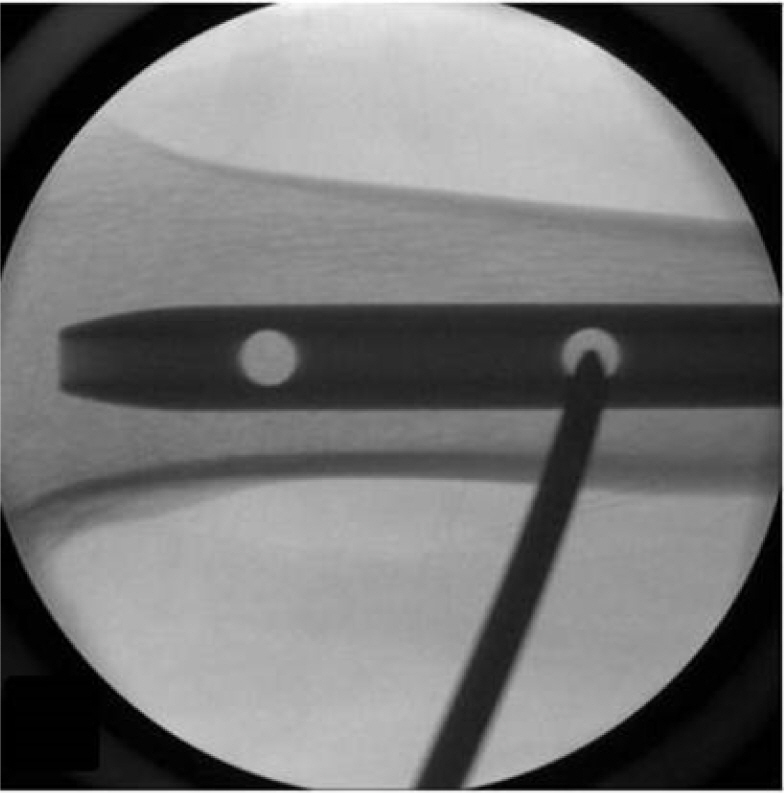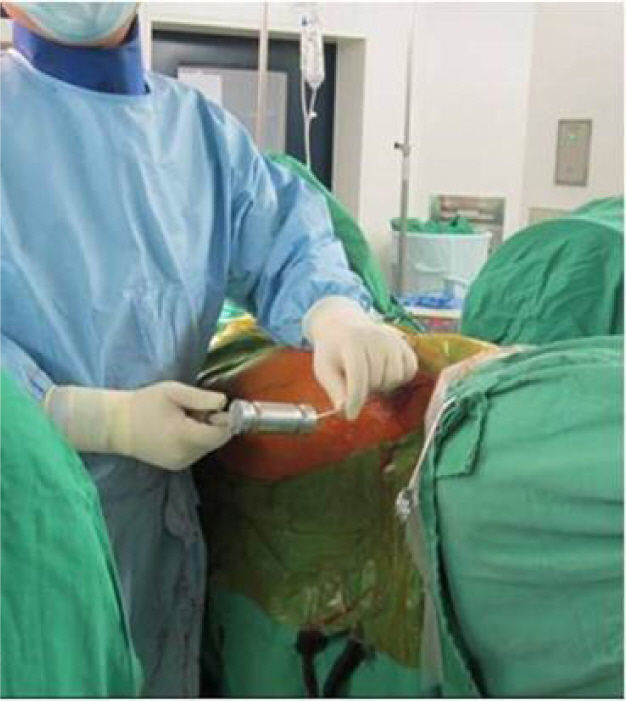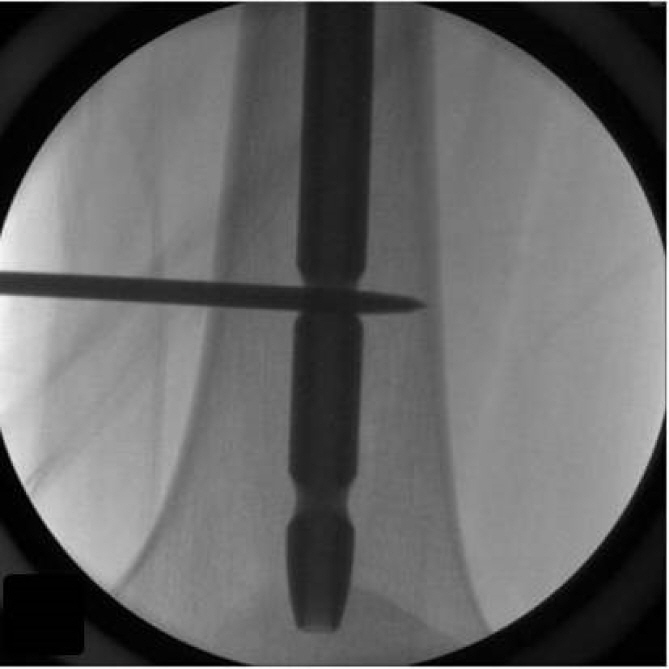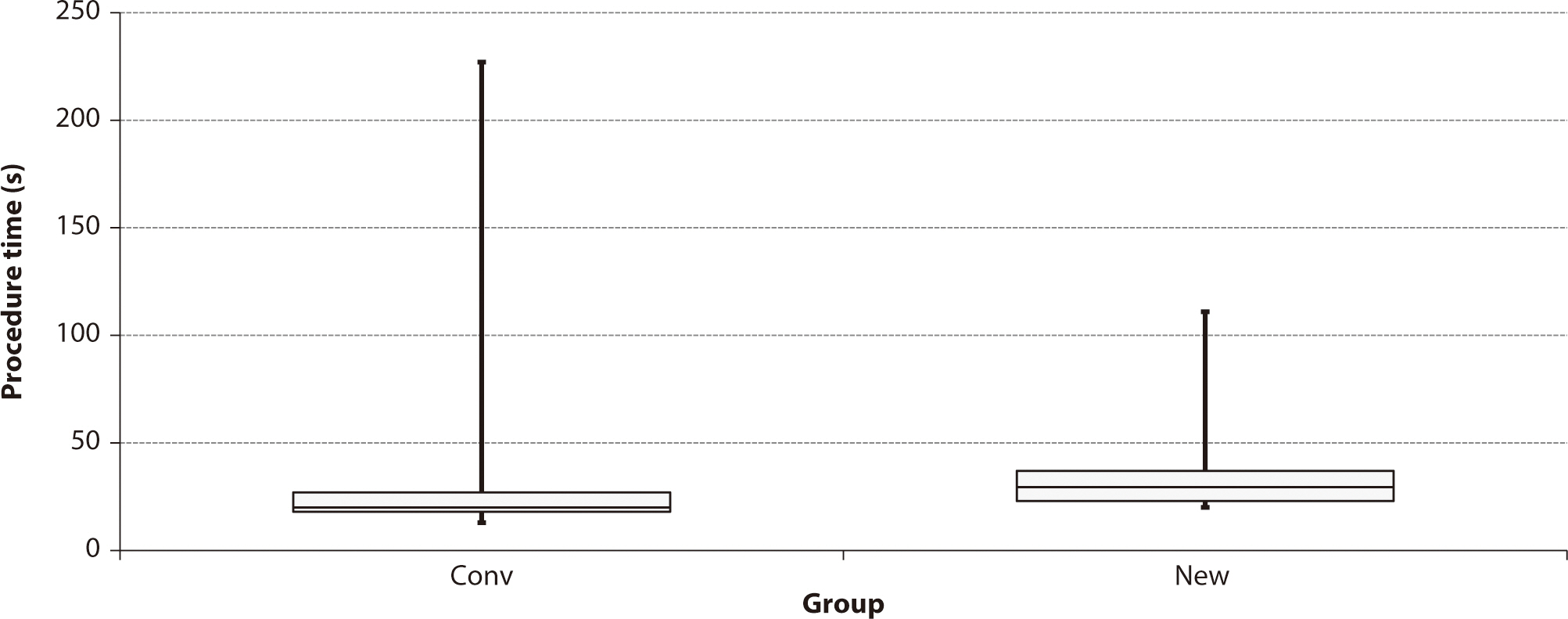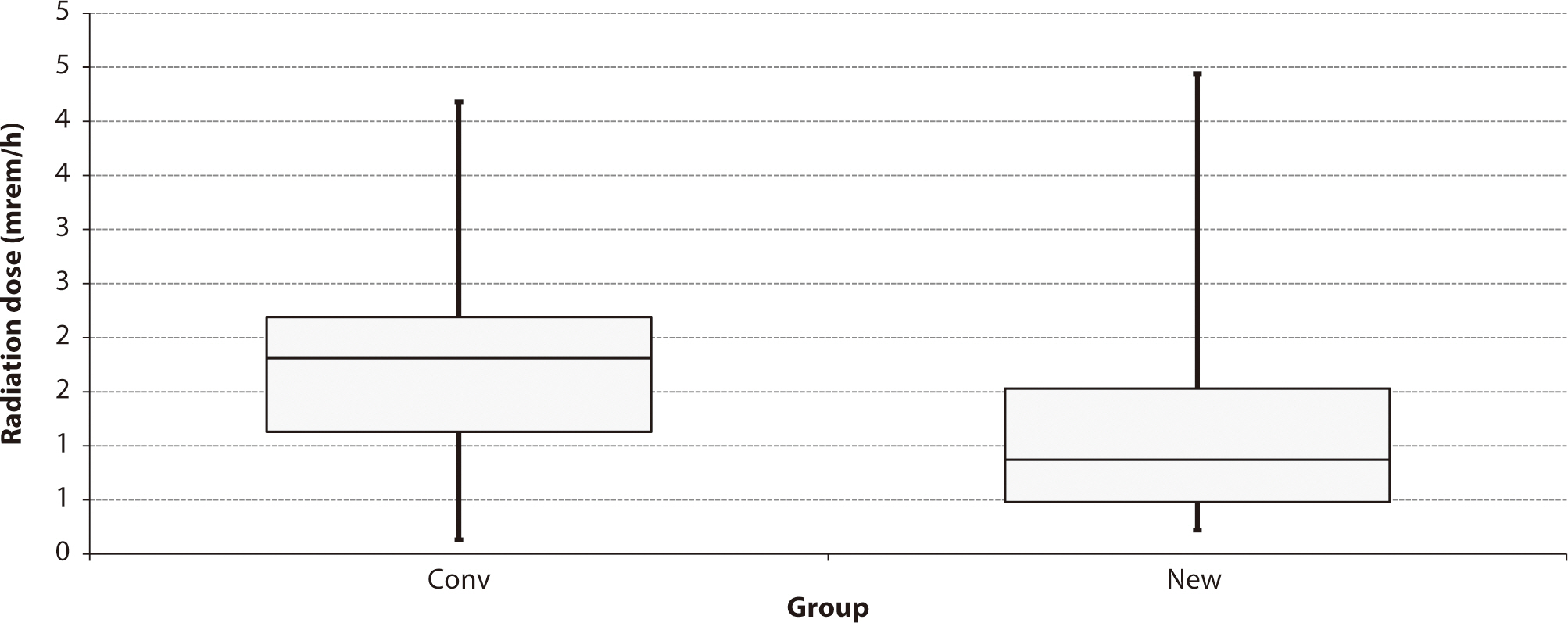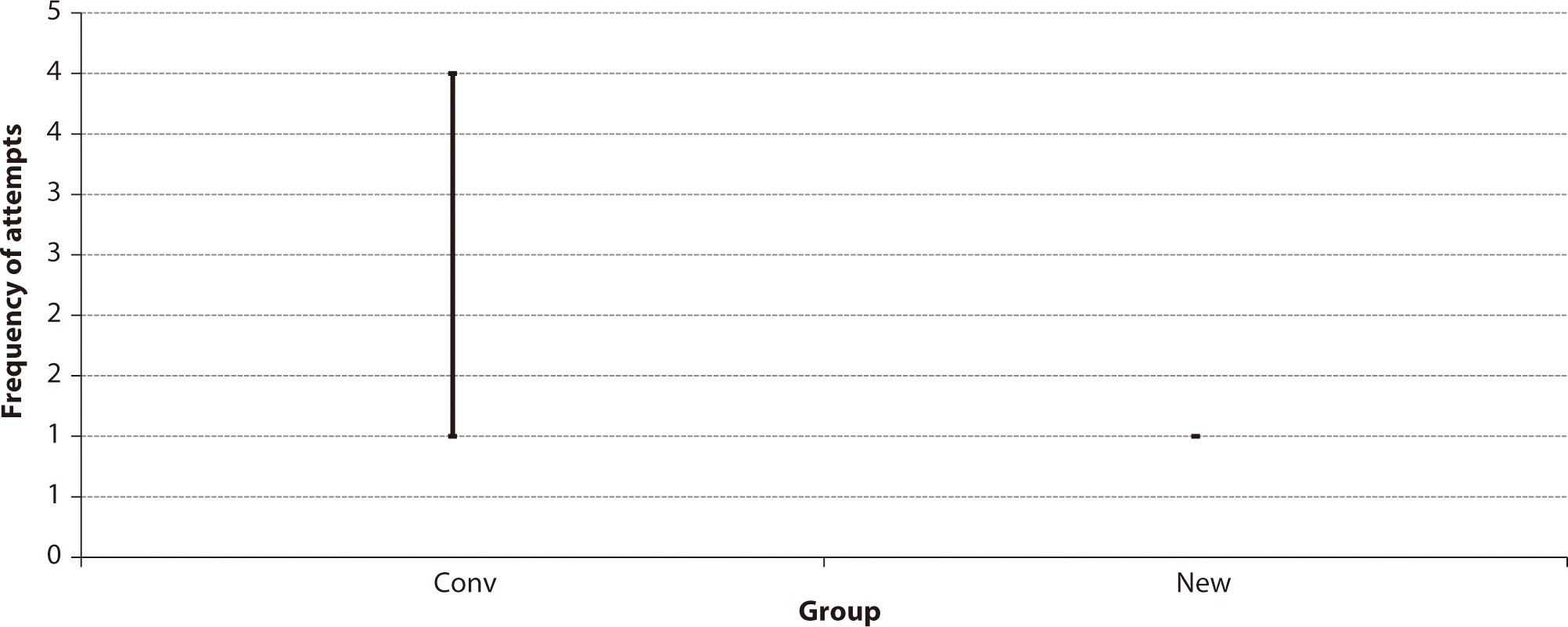Ewha Med J.
2024 Jul;47(3):e39. 10.12771/emj.2024.e39.
Straightforward, safe, and efficient interlocking screw insertion during intramedullary nailing using a Steinmann pin and hammer: a comparative study
- Affiliations
-
- 1Department of Orthopedic Surgery, St. Carolus Hospital, Jakarta, Indonesia
- 2Department of Orthopedic Surgery, School of Medicine, Kyungpook National University, Daegu, Korea
- 3Department of Orthopedic Surgery, Mokpo Hankook Hospital, Mokpo, Korea
- 4Department of Orthopedic Surgery, Gyeongsang National University Changwon Hospital, Gyeongsang National University, College of Medicine, Changwon, Korea
- KMID: 2558576
- DOI: http://doi.org/10.12771/emj.2024.e39
Abstract
Objectives
Accurately targeting distal nail holes and placing distal interlocking screws pose challenges during intramedullary nailing. This study proposes a straightforward technique for distal locking screw insertion using a Steinmann pin, eliminating the need to reposition the pin or drill bit.
Methods
We utilized 18 Sawbones femur models and intramedullary femur nails. A first-year resident created two distal locking holes on each model, employing both the conventional freehand technique and a novel method involving a Steinmann pin and hammer under image intensification. These techniques were evaluated based on three parameters: (1) the time required to create distal locking holes, measured from the moment the pin was positioned at the center of the hole until the far cortex was drilled through the interlocking hole; (2) the radiation dose (in mrem/h), as estimated with a personal gamma radiation dosimeter; and (3) the number of failures, defined as the creation of more than one hole in the near and far cortex.
Results
The new technique was associated with a lower radiation dose (P=0.0268) and fewer failures (P=0.0367) than the conventional approach. Additionally, the time required to establish distal holes was shorter using the new technique compared to the conventional method (P=0.0217).
Conclusion
The creation of distal interlocking holes with a Steinmann pin and hammer is accurate, efficient, and cost-effective.
Keyword
Figure
Reference
-
References
1. Wolinsky P, Tejwani N, Richmond JH, Koval KJ, Egol K, Stephen DJ. Controversies in intramedullary nailing of femoral shaft fractures. Instr Course Lect. 2002; 51:291–303.2. Baltov A, Mihail R, Dian E. Complications after interlocking intramedullary nailing of humeral shaft fractures. Injury. 2014; 45:Suppl 1. S9–S15. DOI: 10.1016/j.injury.2013.10.044. PMID: 24262669.3. Ikpeme I, Ngim N, Udosen A, Onuba O, Enembe O, Bello S. External jig-aided intramedullary interlocking nailing of diaphyseal fractures: experience from a tropical developing centre. Int Orthop. 2011; 35(1):107–111. DOI: 10.1007/s00264-009-0949-0. PMID: 20148329. PMCID: PMC3014482.4. Levin PE, Schoen RW Jr, Browner BD. Radiation exposure to the surgeon during closed interlocking intramedullary nailing. J Bone Joint Surg Am. 1987; 69(5):761–766. DOI: 10.2106/00004623-198769050-00019. PMID: 3597477.5. Müller LP, Suffner J, Wenda K, Mohr W, Rommens PM. Radiation exposure to the hands and the thyroid of the surgeon during intramedullary nailing. Injury. 1998; 29(6):461–468. DOI: 10.1016/s0020-1383(98)00088-6. PMID: 9813705.6. Harrington P, Howell F. An aid to distal locking of the Russell-Taylor humeral nail. Injury. 1998; 29(9):732–733. DOI: 10.1016/s0020-1383(98)00136-3. PMID: 10211210.7. Knudsen CJ, Grobler GP, Close RE. Inserting the distal screws in a locked femoral nail. J Bone Joint Surg Br. 1991; 73(4):660–661. DOI: 10.1302/0301-620X.73B4.2071655. PMID: 2071655.8. MacMillan M, Gross RH. A simplified technique of distal femoral screw insertion for the Grosse-Kempf interlocking nail. Clin Orthop Relat Res. 1988; 226:252–259. DOI: 10.1097/00003086-198801000-00034.9. Maqungo S, Horn A, Bernstein B, Keel M, Roche S. Distal interlocking screw placement in the femur: freehand versus electromagnetic assisted technique (sureshot). J Orthop Trauma. 2014; 28(12):e281–e283. DOI: 10.1097/BOT.0000000000000125. PMID: 24714403.10. Owen TD, Coorsh J. Insertion of the distal locking screws in femoral nailing: a simplified technique. Injury. 1993; 24(2):101–103. DOI: 10.1016/0020-1383(93)90198-f. PMID: 8505113.
- Full Text Links
- Actions
-
Cited
- CITED
-
- Close
- Share
- Similar articles
-
- Interlocking Intramedullary Nailing Versus conventional Kuntscher Intramedullary Nailing for Fracture of the Femoral Shaft
- Delayed Pseudoaneurysm of the Femoral Artery after Intramedullary Nailing of a Femur Shaft Fracture
- Removal of Broken Screws of Interlocking Nail: technical note
- The Distraction Effect of the Fracture Site on Insertion of the Distal Screw in Interlocking Intramedullary Nailing
- The Clinical Results of Unreamed Interlocking Intramedullary Nailing for Tibial Fractures

